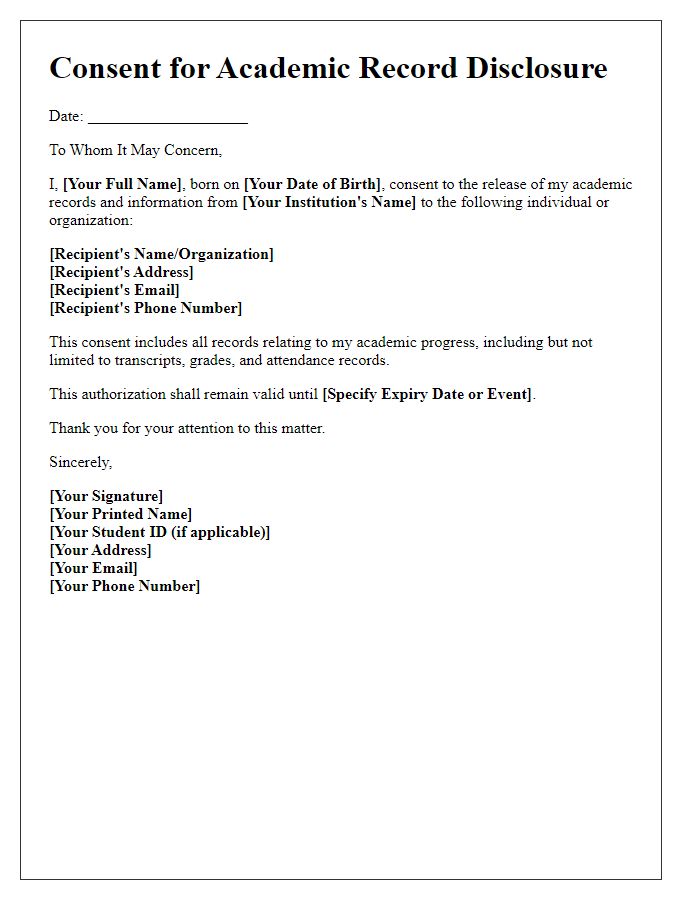Are you looking to streamline the process of accessing your academic records? It's easier than you might think! In this article, we'll walk you through a simple letter template that grants authorization for someone to obtain your academic records on your behalf. Ready to learn how to simplify this procedure? Let's dive in!

Recipient's full name and title
The process of academic record access authorization involves a formal request directed to the relevant educational institution or office managing student records. The request typically includes the recipient's full name and title, such as Director of Admissions, Registrar, or Academic Records Officer, to ensure proper handling. Essential details must be provided, such as student full name, student ID number, and the purpose of access, which may include degree verification, employment applications, or further studies enrollment. Additionally, specifying the duration of access and any legal compliance considerations is crucial for transparency and adherence to privacy regulations. Proper formatting enhances clarity and professionalism in the communication.
Subject: Authorization for Academic Record Access
Students seeking to individually access academic records are often required to authorize educational institutions to release personal information. Academic records typically include transcripts, enrollment verification, and grades, essential for further studies or employment. Institutions, such as universities or colleges, follow specific guidelines (Family Educational Rights and Privacy Act - FERPA in the United States) to protect student privacy. The authorization process generally involves completing a designated form that includes personal identification details, such as student ID, date of birth, and contact information. This document ensures that authorized personnel can efficiently retrieve academic records, which may be necessary for graduate school applications or job opportunities.
Student's full identification details
Accessing academic records requires authorization to ensure confidentiality and protection of sensitive information. Students must provide full identification details, including full name, student identification number (typically an eight-digit number), date of birth (formatted as MM/DD/YYYY), and current contact information (address, phone number, email address). Also, a signature is usually required to validate the request. Such information allows institutions to verify the identity of the requester and ensure that academic records are shared only with authorized individuals.
Specific records and duration for access
Access authorization for academic records allows designated individuals to view a student's educational information. This typically includes transcripts, grades, and attendance records, spanning specified dates, such as the previous two academic years (2021-2022 and 2022-2023). Institutions like universities or colleges often have guidelines that define the process, ensuring compliance with privacy laws, such as the Family Educational Rights and Privacy Act (FERPA). Additionally, access could be granted to particular entities, such as employers, scholarship committees, or other educational institutions, for purposes like employment verification or application assessments. Proper identification and completion of requisite forms often precede the authorization process.
Student's signature and date of authorization
Authorization for academic record access involves the consent of the student, which typically requires a signature and the date indicating when the authorization was granted. This document allows designated individuals or institutions, such as universities or potential employers, to obtain access to the student's educational records, including transcripts, enrollment status, and grades. The student's signature confirms their permission and understanding of the privacy regulations surrounding their records, as established by laws such as the Family Educational Rights and Privacy Act (FERPA) in the United States. The date ensures a clear timeline for when the authorization is valid, which may be necessary for record-keeping or future inquiries.













Comments